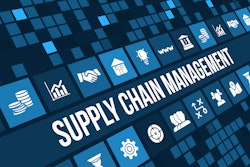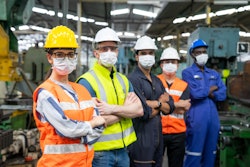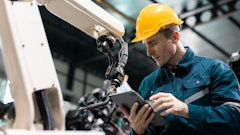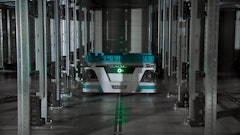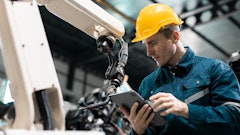
When employees walk out the door, they take more than just their personal belongings–they also leave behind added costs and productivity challenges. The burden of replacing employees adds up quickly, between recruiting, onboarding, and training new hires, which all require significant time and resources. Productivity often dips as new employees get up to speed, which can drag overall team performance. When turnover affects multiple roles across a facility, these challenges multiply, turning employee attrition into a serious financial drain.
The stakes are especially high in manufacturing and supply chain environments, where losing frontline workers can immediately slow production. Existing team members often absorb the extra workload, leading to burnout, reduced job satisfaction, and a higher risk of errors.
These conditions make it even harder to retain staff, such as younger employees. Gen Z workers, in particular, expect digital-first experiences at work, mirroring the seamless tech integration they’ve grown up with. To both retain current employees and attract the next generation, companies must invest in modern technology and move away from outdated systems.
Quantifying the cost of turnover in manufacturing
Turnover is a costly problem for any industry, but in manufacturing, the impact financially and operationally is especially severe. Just how severe? Relay Pro data estimates replacing a single employee can cost a company the equivalent of 6-9 months of that employee’s salary. That means for a frontline worker earning $60,000 annually, replacement expenses could range from $30,000-45,000, factoring in recruiting, onboarding, training, and lost productivity.
In manufacturing environments, these costs are compounded by operational disruption. Frontline roles are essential for maintaining production flow and keeping supply chain operations running smoothly. When one of these employees leaves, the consequences ripple across the operation. Output may slow or even come to a halt, particularly if the vacant position requires specialized skills or certifications. The remaining team members are often left to cover the gap, leading to overwork, fatigue, and a greater likelihood of additional turnover.
Beyond the immediate productivity hit, high turnover can undermine team morale and erode institutional knowledge. Frequent departures can make workloads feel unfair and unstable, creating an environment where even strong performers start to consider leaving. For companies that depend on efficiency and consistency, these compounding effects make every departure a significant setback.
New generation, new expectations
For Gen Z, workplace technology isn’t just a perk–it’s an expectation. Raised on smartphones, intuitive apps, and instant digital connectivity, this generation demands seamless experiences in nearly every aspect of life. Gen Z employees are expected to comprise 30% of the workforce by 2030, and when they enter workplaces that still rely on paper processes or outdated legacy systems, the disconnect is immediate and frustrating. These tools not only feel inefficient but also out of step with the digital-first environments Gen Z has come to expect.
An Adobe survey found that 70% of Gen Z employees would leave their current job for one that offers better technology, which speaks volumes to how deeply integrated tech is with their perception of workplace value. When younger workers compare their experience to peers in industries like finance, healthcare, or retail (where streamlined communication and digital tools are more common), they begin to view their own roles as behind the curve.
Over time, the absence of modern tools can feel like a signal that the company isn’t invested in innovation or their professional development. Without it, organizations risk losing a generation of workers who equate outdated systems with limited growth and innovation, and fewer long-term opportunities.
Technology as a retention strategy
We continue to see modern technology transforming the frontline employee experience, offering tools that not only boost operational efficiency but also improve worker satisfaction and retention. For example, many manufacturing floors are implementing communication wearables that enhance safety and streamline communication. These devices also employ predictive maintenance software and digital task management systems, helping reduce manual work and eliminate common frustrations on the factory floor.
By replacing outdated tools with modern, user-friendly solutions, companies show employees that they are invested in their success. When workers have access to technology that helps them perform better, they feel more confident, productive, and supported. This translates into real business results: companies that have adopted modern frontline technology report 4.5 times higher retention rates than those still relying on legacy systems, according to our research.
To maximize the impact of tech adoption, manufacturers should empower frontline workers to become "super-users" who can champion and train others. Establishing two-way communication channels helps employees feel heard, while recognizing and rewarding engagement. Peer-nominated awards or digital recognition platforms reinforce a culture of appreciation and continuous improvement.
From turnover to tenure
In a competitive labor market, manufacturers that invest in modern technology are gaining a clear advantage. These companies aren’t just optimizing their operations; they’re creating workplaces where employees feel empowered, supported, and motivated to stay.
Employing up-to-date tools is a strategic move to foster a stronger, more loyal workforce. When frontline workers feel that their time, skills, and well-being are valued, they’re more likely to remain committed and contribute at a higher level. Ultimately, a company’s success depends on its people. When those people are equipped with the right tools and environment, retention improves, collaboration grows, and the entire organization thrives.







